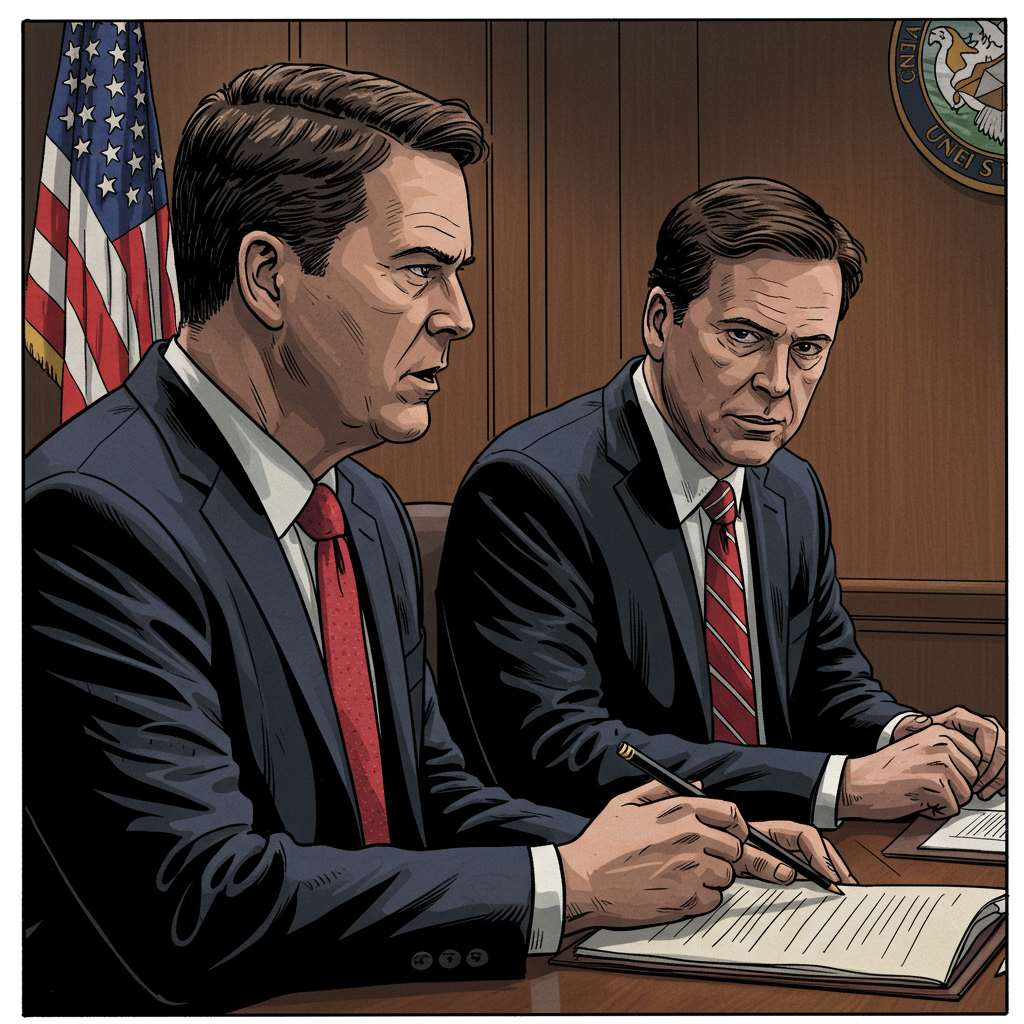The Supreme court has issued a pivotal ruling, clearing the way for the Trump administration to move forward with plans for widespread layoffs across numerous federal agencies. This decision, handed down on Tuesday, lifts a lower court’s order that had temporarily halted these proposed staffing reductions, impacting potentially tens of thousands of government employees nationwide. It represents another instance where the high court has sided with President Trump’s broad interpretation of executive authority, particularly concerning the federal workforce.
The 8-1 vote overturns an injunction from a federal judge in San Francisco. That judge had blocked mass layoffs initially planned across more than 20 government departments and agencies. This legal battle centers on a fundamental question of U.S. governance: who holds the power to undertake large-scale reorganization and reduction-in-force (RIF) actions within federal agencies – Congress or the President?
High Court Backs Administration’s Argument
In a brief order, the Supreme Court indicated its preliminary view. The justices stated that “the Government is likely to succeed” on its argument that the administration’s Executive Order and related Memorandum regarding staffing reductions “are lawful.” This suggests the court believes the administration has a strong case that the president possesses the necessary authority for such actions. However, the court also specified that its decision was not a final ruling on the legality of any specific layoffs that might occur under these plans.
This aligns with a series of temporary orders from the court since mid-April. These previous orders had also allowed planned funding and staffing cutbacks at federal agencies to proceed temporarily. Justice Sonia Sotomayor issued a separate statement concurring with the decision to lift the injunction. She noted her agreement was based on the ruling’s narrow and temporary scope, leaving the door open for lower courts to examine the legality of specific agency plans.
Judge Illston’s Stance on Congressional Authority
The challenge originated from a May 22, 2025, ruling by U.S. District Judge Susan Illston in San Francisco. Judge Illston had agreed with arguments brought by labor unions seeking to block the layoffs. She asserted that Congress, not the President alone, is responsible for creating federal agencies and defining their size, functions, and duties. Her order stated that agencies cannot conduct “large-scale reorganizations and reductions in force in blatant disregard of Congress’s mandates.” She emphasized that a president must “partner with Congress” for such significant executive branch restructuring initiatives.
Judge Illston’s injunction applied broadly, barring mass layoffs at over 20 departments and agencies. These included major entities like the Departments of Commerce, Energy, Health and Human Services (HHS), Housing and Urban Development (HUD), Interior, Labor, State, Treasury, Transportation, and Veterans Affairs (VA). Independent agencies such as the Environmental Protection Agency (EPA), General Services Administration (GSA), and the National Science Foundation (NSF) were also covered by her order.
The proposed scale of these cuts was substantial. Judge Illston highlighted specific examples: HHS planned to cut 8,000 to 10,000 employees, the Energy Department 8,500. The Veterans Administration initially targeted 83,000 layoffs but later reduced that number to about 30,000. Unions argued these were not independent agency decisions but were being directed centrally by the Trump administration’s Office of Management and Budget (OMB), formerly led by Russ Vought, as part of a broader reorganization effort. Judge Illston agreed that such centralized reorganization required congressional action.
Administration’s Argument for Executive Power
The Trump administration appealed Judge Illston’s ruling. After the U.S. 9th Circuit Court of Appeals upheld her injunction by a 2-1 vote, the case advanced to the Supreme Court. Administration lawyers, led by Solicitor General D. John Sauer, argued forcefully that the President possesses the “full authority” to implement these staffing reductions. Sauer contended that the Constitution “does not erect a presumption against presidential control of agency staffing.” He argued the president does not need “special permission from Congress” to manage the executive branch workforce.
Sauer further asserted that federal law already permits agencies to reduce staff. He suggested that federal bureaucrats were never intended to have “lifetime employment,” regardless of the availability of work. The administration argued before the Supreme Court that the district court’s order was “flawed” and based on an “indefensible premise” that the president needed congressional authorization for personnel decisions. They claimed the injunction interfered with executive authority, halted in-progress RIFs, caused confusion, and forced the government to retain employees potentially deemed not in the public interest, at taxpayer expense.
Lawyers for the labor unions pushed back, urging the Supreme Court not to lift the injunction prematurely. They warned that allowing the layoffs before a full legal review would cause “irreversible damage.” Union representatives described the potential outcome as the abolition of offices, radical agency downsizing, the loss of critical public services, and potentially hundreds of thousands of job losses. They used the vivid analogy that there would be “no way to unscramble that egg” if the cuts proceeded and were later deemed illegal. They argued the injunction simply required the administration to seek congressional approval for such drastic reorganizations.
Dissent Highlights Constitutional Concerns
Justice Ketanji Brown Jackson was the lone dissenter in the 8-1 Supreme Court decision. She voiced strong disagreement with the court’s decision to intervene at this stage. In her dissent, Justice Jackson emphasized a core constitutional principle: “Under our Constitution, Congress has the power to establish administrative agencies and detail their functions.” She appeared concerned that the court’s action might be “greenlighting” legally questionable executive actions prematurely.
This ruling allows the administration to advance its plans for widespread workforce reductions based on the executive order. However, the legality of the specific RIF and reorganization plans implemented by individual agencies remains a potential area for future legal challenges in the lower courts. While litigation is expected to continue, the Supreme Court’s current stance suggests it is unlikely to reverse its position on allowing the staffing cutbacks to proceed, at least based on the initial executive directives.
The potential impact on federal agency operations and the federal workforce is significant. For instance, a California-trained ocean researcher, speaking anonymously to express concerns about cuts at the National Oceanic and Atmospheric Administration (NOAA), lamented the loss of “hundreds of probationary employees” and a planned reduction from 12,000 to 10,000 full-time staff. This researcher highlighted the immediate loss of “thousands of years of institutional knowledge and expertise overnight,” potentially endangering critical operations and systems. Specific concerns were raised about the agency’s ability to perform functions like deploying hurricane monitoring equipment (“Saildrones”) or climate change research barges. The sentiment among colleagues, according to the researcher, is one of deep worry, hoping this isn’t a “dark age in American science” but merely a temporary “blip.”
This decision underscores an ongoing legal and political debate over the balance of power between the executive and legislative branches concerning the vast federal bureaucracy. It clears an immediate legal hurdle for the administration’s downsizing efforts but leaves the door open for further legal battles over the specifics of how and where these cuts are implemented.
Frequently Asked Questions
What was the core legal question in this Supreme Court case?
The central legal dispute revolved around whether the authority to initiate large-scale reorganizations and workforce reductions within federal agencies rests primarily with Congress or the President. U.S. District Judge Susan Illston had ruled that Congress, which creates and defines the duties of agencies, must partner with the President for such significant changes. The Trump administration argued the President has inherent constitutional authority over the executive branch workforce without requiring specific permission from Congress.
Which federal agencies were initially targeted for large-scale staffing cuts?
Based on the lower court’s injunction, mass layoffs were planned across more than 20 federal departments and agencies. Key examples mentioned included the Departments of Commerce, Energy, Health and Human Services (HHS), Housing and Urban Development (HUD), Interior, Labor, State, Treasury, Transportation, and Veterans Affairs (VA). Agencies like the Environmental Protection Agency (EPA), General Services Administration (GSA), and the National Science Foundation (NSF) were also listed as being affected by the administration’s plans.
What are the potential impacts of these federal workforce reductions?
Unions warned of “irreversible damage,” including the potential abolition of offices, radical agency downsizing, the loss of critical public services, and significant job losses for hundreds of thousands of federal employees. Concerns were also raised about the loss of institutional knowledge and expertise, potentially compromising agency operations. For example, a NOAA scientist expressed worry that staff cuts could hinder essential functions like issuing flood alerts or deploying research equipment necessary for environmental monitoring and public safety.
Word Count Check: 1110



